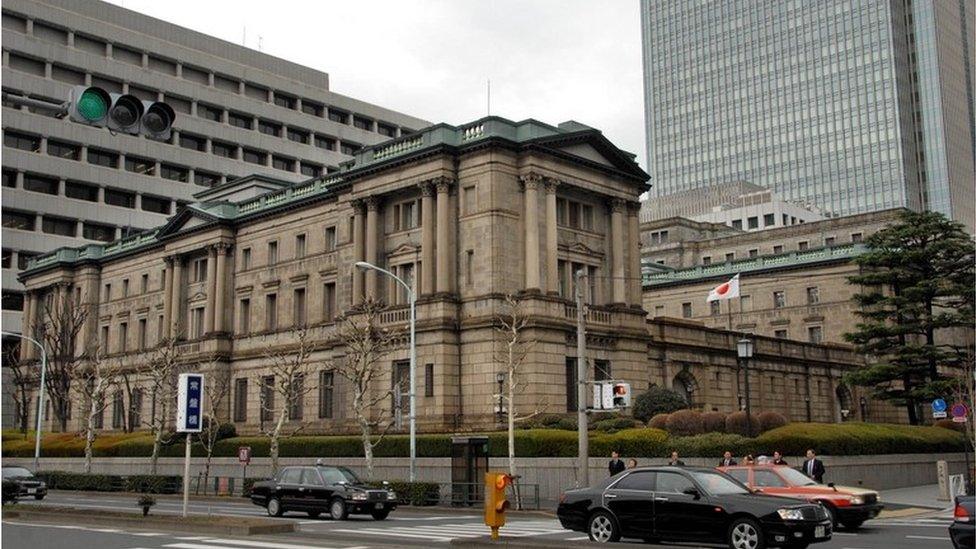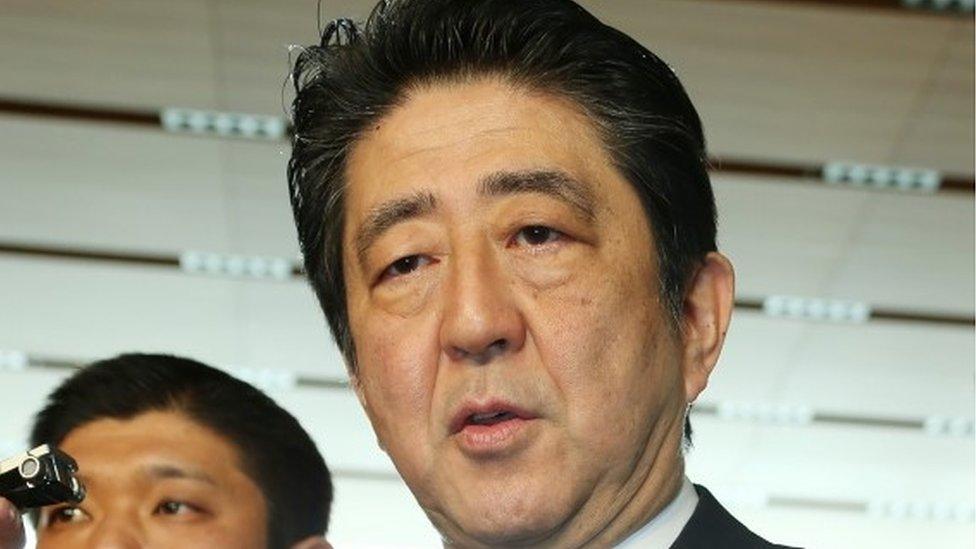Is the world turning Japanese?
- Published

As the Group of Seven leaders meet in Japan this week to discuss stabilising global growth, one of the key concerns will be whether developed nations are facing an inevitable future of low or no growth.
It's called the "Japanese Disease". A cycle of low growth and low prices for more than two decades.
The Japanese government has tried everything to get growth rates and prices up again: negative interest rates, structural reforms and fiscal stimulus - but nothing appears to be working so far.
Boom
It wasn't so long ago that Japan was the poster-child for economic success, and the envy of its neighbours. The 1980s and 90s were characterised by innovation and overseas expansion for Japanese corporates, and a massive real estate boom at home.
So what went wrong? And is this the inevitable future for developed and mature economies?
In many ways, Japan became a victim of its own success, says Yasunori Nishiyama, head of healthcare innovation at Mitsui Chemicals. And he should know. He's in charge of marketing Japanese healthcare products to the US, and it hasn't been easy.
"Companies that have a long history in Japan don't like big changes," he says. "They worry about the size of the risk they're facing. Japan is suffering from the trap of its own success, and our past successes have made us too conservative."
Sitting on a fortune
I have heard the same sentiments from pretty much every expert and academic I met while covering the G7 meetings in Japan this week. Monetary policy - even tools as unconventional as negative interest rates - isn't going to revitalise Japan's economy on its own.
Fiscal stimulus - government spending - isn't going to do that either. Corporate Japan must do more - it is sitting on piles of cash and not making enough new investments, creating jobs or raising wages fast enough.
But here's the rub - Japan Inc IS investing - just not at home. Companies have been investing overseas, because it's cheaper, and they feel the domestic economy has peaked. Consumers aren't buying their products at home, which means prices aren't going up.
But it's a vicious cycle. Consumers don't buy because they don't feel confident about the economy, companies don't make profits, they don't invest in new jobs or raise wages, consumers don't spend money - you get the picture.

Japanese Prime Minister Shinzo Abe Staked his credibility on turning the economy around
Barely there
So what now? Japan has been trying to get out of this vicious cycle for 20 years now and has failed. Boosting economic growth has been the promise of successive governments and Prime Minister Shinzo Abe has staked his credibility on turning Japan's economy around. Growth has inched up - but barely, and is likely to grow by just 0.2% next year, according to BNP Paribas' latest forecast.
And yet, most Japanese people will tell you, despite this low growth - things aren't so bad.
Here's why:
Japan enjoys a relatively high standard of living, with an enviable quality of life, as Martin Feldstein of Project Syndicate points out in this piece, external: Unemployment is low, public transport is efficient and reliable.
And although working hours can be pretty dire, Prime Minister Abe is trying to address that. GDP per capita - basically how much the country produces divided by the number of people in the country - was at $36,000 in 2011-15 in comparison with the US's $54,000, external.
Not too shabby.
So perhaps the lesson in all of this, as world leaders gather in Kashikojima, or the aptly named Island of Wisdom as Prime Minister Abe describes it in his latest op-ed, external in the WSJ is that IF developed countries are facing a future of low or no growth, and shrinking populations, then perhaps governments should focus on improving living standards and not simply chase high economic growth rates.
- Published22 May 2016